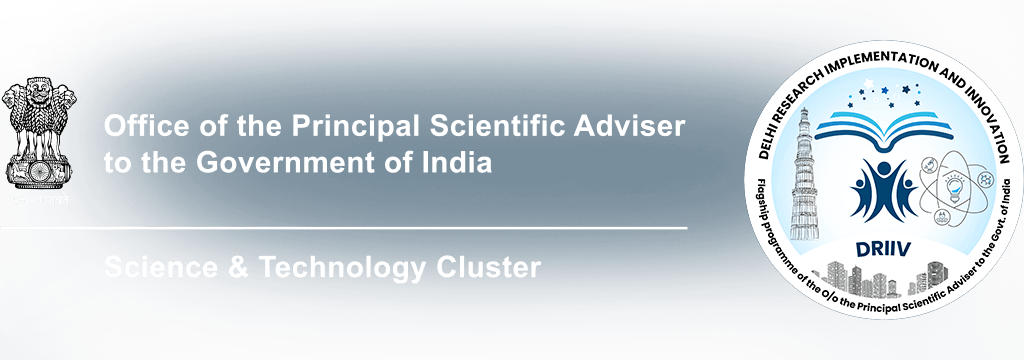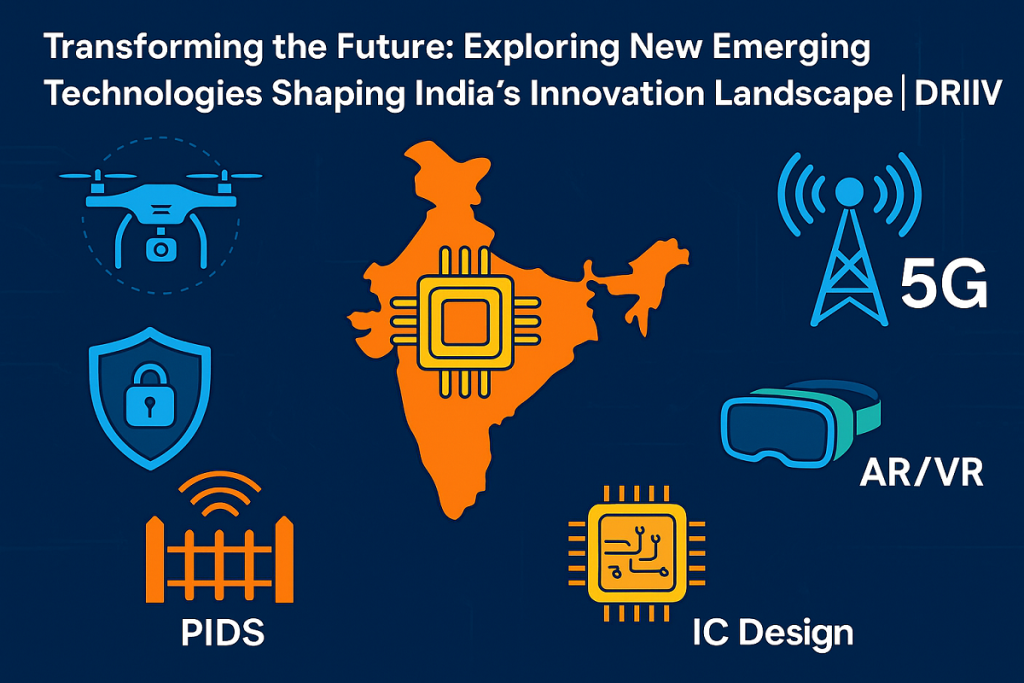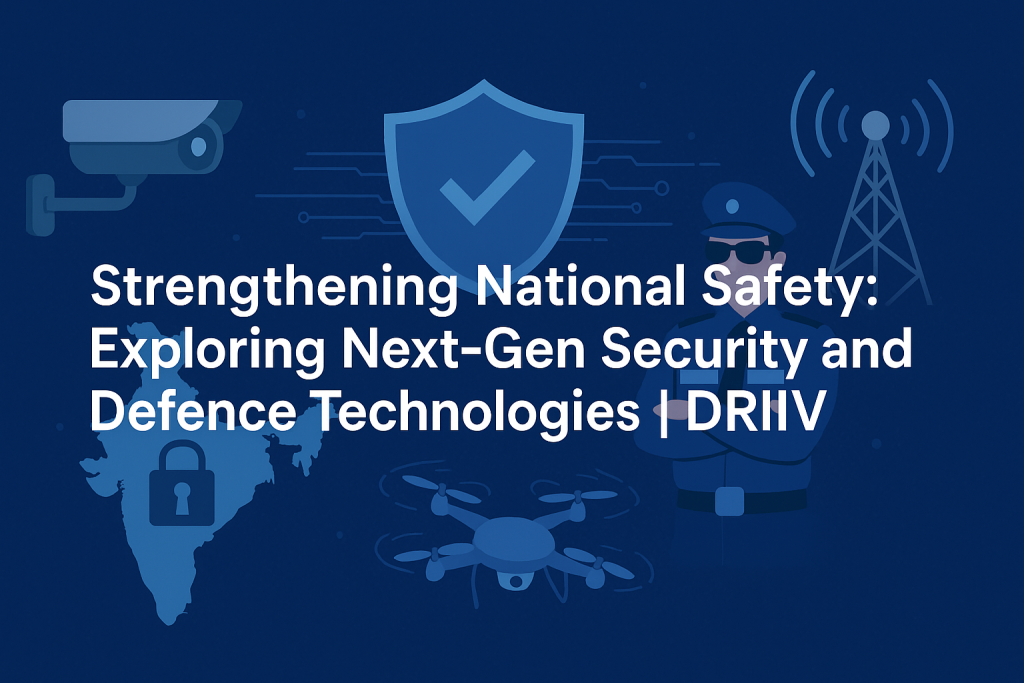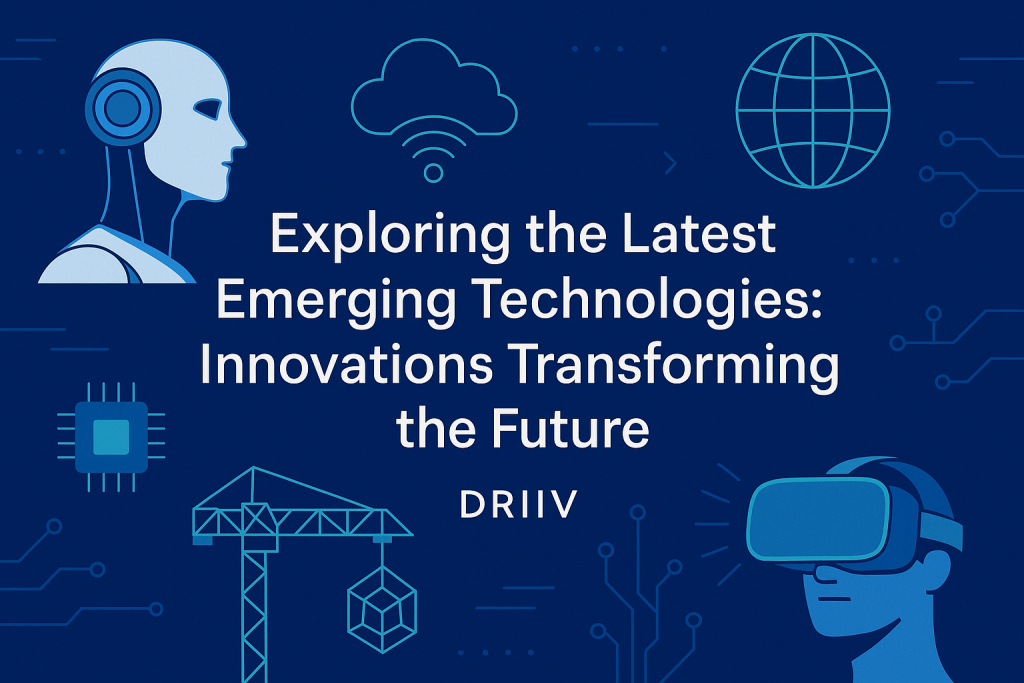In today’s fast-moving world, new emerging technologies are changing how we live, work, and connect. From smart Drones to advanced Cybersecurity, and from 5G networks to immersive AR/VR experiences, India is witnessing a technology revolution. These innovations are not just futuristic—they’re already becoming a vital part of our daily lives and industries.
At DRIIV (Delhi Research Implementation and Innovation), we aim to harness the power of innovation and science to solve real-world problems. Our work focuses on strengthening India’s capabilities in areas like Semiconductor development, IC Design, and PIDS (Perimeter Intrusion Detection Systems) to ensure a smarter, safer, and more connected future.
1. What Are New Emerging Technologies?
New emerging technologies are recent innovations that have the potential to transform industries and societies. These include cutting-edge developments in computing, communication, hardware design, and digital security.
- Some of the major new emerging technologies being used and developed in India include:
- Drones (Unmanned Aerial Vehicles)
- Cybersecurity systems
- Semiconductor fabrication and chips
- PIDS for security
- 5G network rollouts
- AR/VR (Augmented and Virtual Reality)
- IC Design (Integrated Circuit design)
These technologies have applications across agriculture, defense, education, healthcare, smart cities, and more.
2. Drones: Taking Flight Towards Smart Solutions
Drones are revolutionizing various sectors in India. From monitoring crops in agriculture to delivering medical supplies in remote areas, drones offer efficient, low-cost solutions.
At DRIIV, we promote drone-based technologies in:
Disaster management
- Traffic surveillance
- Agriculture (precision farming)
- Smart infrastructure monitoring
With government initiatives like the Drone Shakti scheme, India is fast becoming a global drone hub, driving economic and technological growth.
3. Cybersecurity: Protecting India’s Digital Infrastructure
As digitalization grows, so do cyber threats. Cybersecurity is no longer optional—it’s essential. New cybersecurity technologies are being developed to protect national infrastructure, data, and businesses.
DRIIV supports research in:
- AI-based threat detection
- Blockchain for secure transactions
- Secure network protocols for smart cities and critical infrastructure
Cybersecurity is crucial for sectors like banking, defense, and healthcare, especially as India expands its 5G network.
4. Semiconductors: Powering India’s Digital Future
The global demand for Semiconductors is at an all-time high. These tiny chips are at the heart of every digital device—from smartphones to satellites.
India is focusing on strengthening its Semiconductor ecosystem, including:
- Design and fabrication
- Material innovation
- Foundry development
- Packaging and testing facilities
DRIIV actively collaborates with research labs and industries to promote semiconductor R&D and support government programs like India Semiconductor Mission.
5. PIDS: Enhancing Perimeter Security
PIDS (Perimeter Intrusion Detection Systems) are advanced security systems used to detect unauthorized access to protected areas. They are widely used in:
- Military bases
- Airports
- Power plants
- Smart campuses
With increasing security needs, DRIIV encourages indigenous innovation in PIDS using radar, IR sensors, laser fencing, and AI analytics to build smarter and safer environments.
6. 5G Network: Building the Backbone of Connectivity
India is rolling out its 5G network, which will significantly improve internet speed, reduce latency, and enable massive IoT deployment.
Key benefits of the 5G network:
- Real-time communication for industries like healthcare and robotics
- Smart transportation and mobility
- Support for AR/VR experiences
- Faster data for remote education and telemedicine
DRIIV promotes the adoption of 5G-enabled technologies and startups that are building tools and platforms to leverage this new era of connectivity.
7. AR/VR: Blurring the Lines Between Physical and Digital Worlds
AR/VR (Augmented Reality and Virtual Reality) are changing the way people interact with digital content. In India, AR/VR is making big strides in:
- Healthcare (virtual surgeries, training)
- Education (immersive learning experiences)
- Retail and e-commerce
- Gaming and entertainment
DRIIV supports projects that use AR/VR for societal impact, such as mental health treatment, virtual classrooms, and cultural preservation.
8. IC Design: The Brain Behind Smart Devices
IC Design (Integrated Circuit Design) is the process of creating chip layouts and circuits that power all modern electronics.
With the rise in demand for local manufacturing and Semiconductor independence, IC Design is gaining priority in India.
DRIIV collaborates with institutions and startups to build capabilities in:
- VLSI (Very-Large-Scale Integration)
- Analog and digital chip design
- EDA (Electronic Design Automation) tools
IC Design expertise will empower India to build high-performance chips for defense, healthcare, and consumer electronics.
How DRIIV is Empowering India’s Tech Transformation
As a leading Science and Technology Cluster, DRIIV supports the entire innovation pipeline—from lab to market. Here’s how:
- Innovation challenges to support startups and research
- Collaborations between academia, industry, and government
- Tech transfer and scale-up of impactful ideas
- Pilot deployments of emerging technologies
- Support for semiconductor and IC innovation
Through these efforts, DRIIV helps India become a global leader in new emerging technologies.
Frequently Asked Questions (FAQs)
Q1. What are new emerging technologies in India?
Answer: New emerging technologies in India include Drones, Cybersecurity systems, Semiconductors, PIDS, 5G networks, AR/VR, and IC Design. These technologies are shaping industries such as healthcare, agriculture, defense, and education.
Q2. How are Drones used in India today?
Answer: Drones are used for agriculture monitoring, emergency delivery, surveillance, mapping, and smart infrastructure inspections. They provide cost-effective and efficient solutions across sectors.
Q3. Why is Cybersecurity important with the growth of 5G?
Answer: As 5G networks enable faster data transfer and more connected devices, they also increase vulnerability to cyber-attacks. Cybersecurity is crucial to protect personal data, financial systems, and national infrastructure.
Q4. What is IC Design and why does it matter?
Answer: IC Design is the process of designing integrated circuits or microchips that control how electronic devices operate. It’s essential for building smartphones, computers, and even satellites. It supports the Semiconductor industry by designing the brains behind smart devices.
Q5. How is DRIIV contributing to technological innovation?
Answer: DRIIV fosters innovation by supporting R&D, startup incubation, and tech commercialization. We focus on technologies like Cybersecurity, IC Design, Semiconductors, and AR/VR that have real-world impact.
Conclusion
India is on the path to becoming a global innovation powerhouse. With advancements in new emerging technologies like Drones, Cybersecurity, Semiconductors, PIDS, 5G networks, AR/VR, and IC Design, the country is building a more secure, connected, and intelligent future.
At DRIIV, we believe that science and technology can drive impactful change. By connecting research with real-world problems and fostering collaborative innovation, we are helping build AtmaNirbhar Bharat—a self-reliant and tech-forward India.




